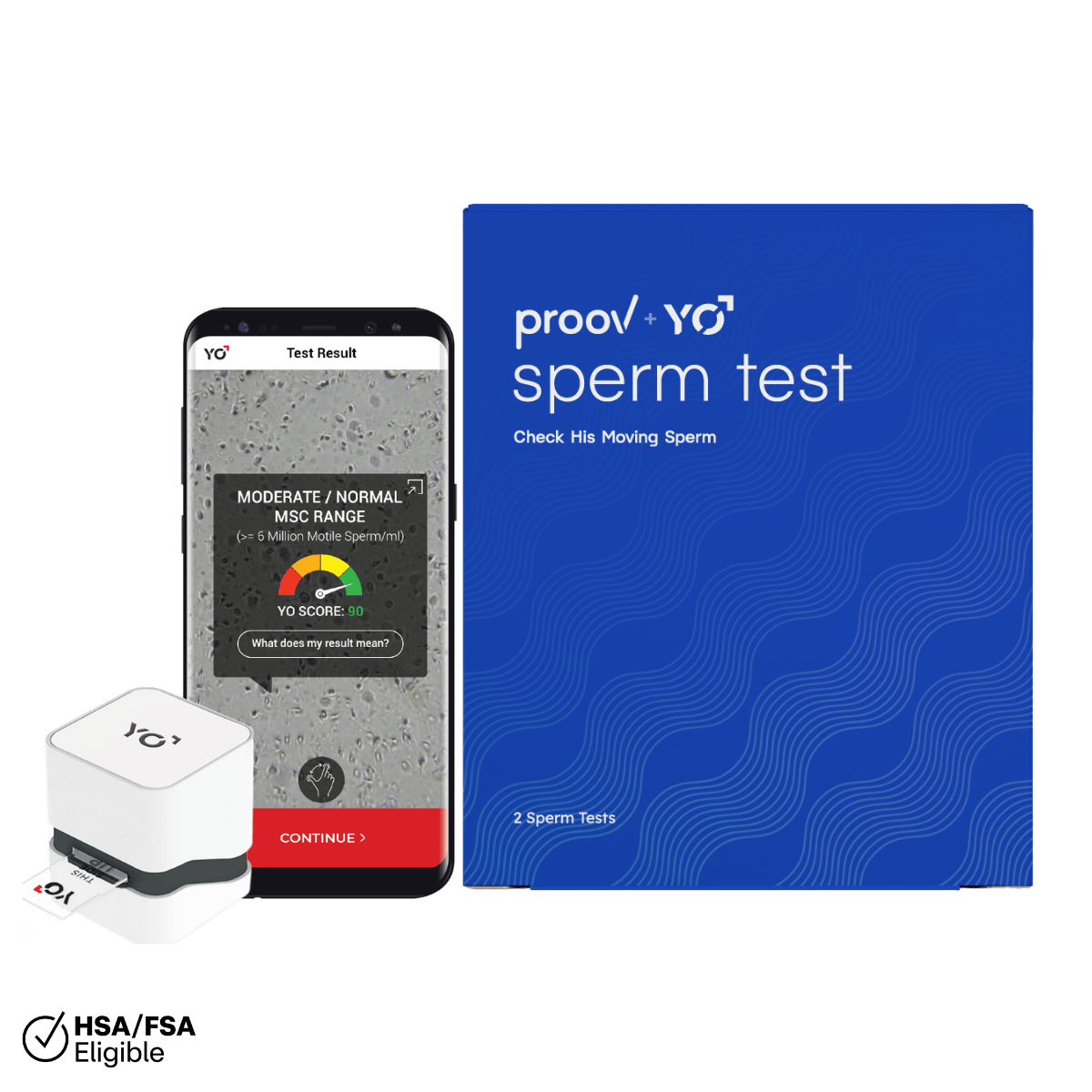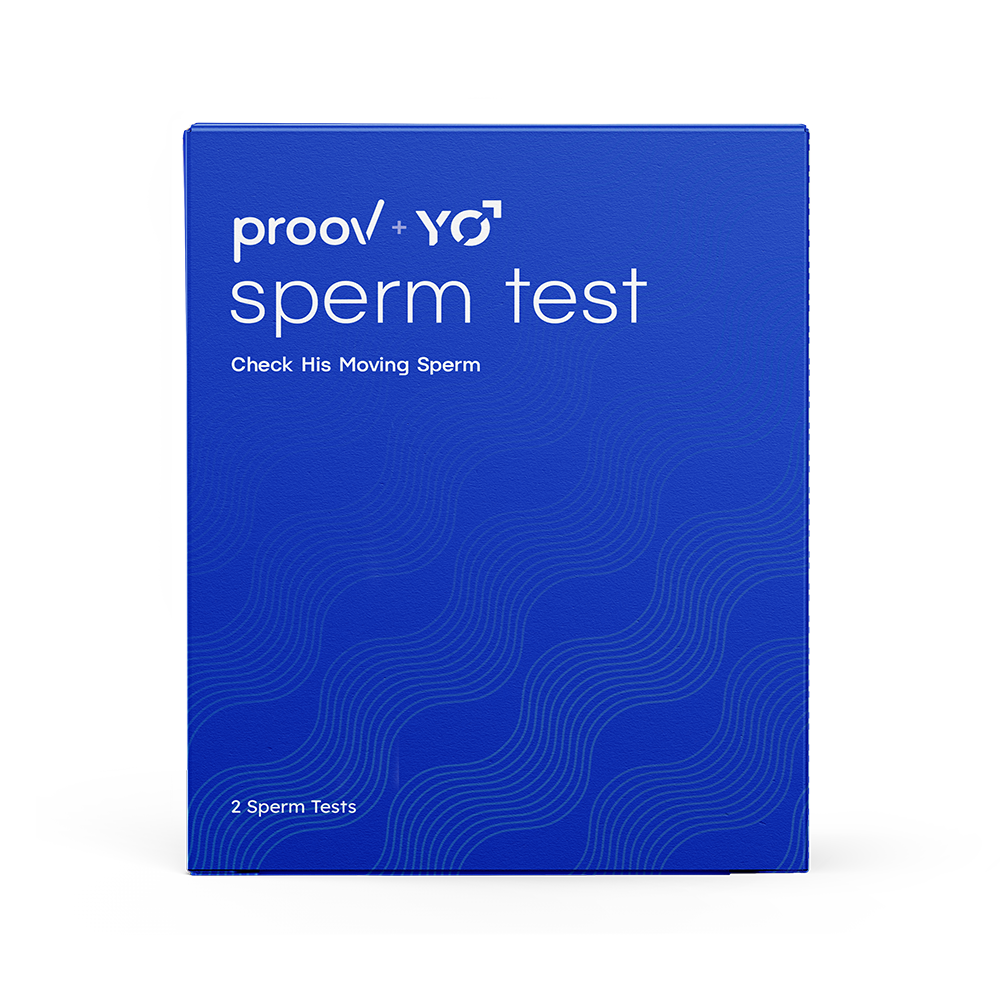Medically reviewed by: Dr. Joshua U. Klein is a board-certified Reproductive Endocrinologist, a Fellow of the American College of Obstetrics and Gynecology, and assistant professor of Obstetrics, Gynecology, and Reproductive Science at the Icahn School of Medicine at Mount Sinai in New York City. He is also Chief Clinical Officer at Extend Fertility, a leading NY-based fertility clinic. Dr. Klein has also consistently been named “New York Super Doctor.”
Updated 9/30/22
Many women in the trying to conceive community are familiar with the “fertile window,” which are the few days each month where conception is possible. Timing intercourse during your fertile window is critical when TTC!
However, there’s another important window to know about during your cycle: the implantation window! Keep reading to learn more about the importance of the implantation window and how to calculate when it will occur.
What is implantation and when does it occur?
Implantation occurs when a newly formed embryo attaches itself to the wall of the mother's uterus. After implantation occurs, pregnancy begins.
After conception occurs (i.e. sperm fertilizing the egg), the newly formed embryo still needs to travel down the fallopian tube into the uterus, where it will find the best place to attach to the uterine lining. Scientists discovered that roughly 6 days after fertilization occurs, the outer layer of the embryo interacts with the uterine lining in order to stick to the uterine wall and stop it from traveling too far. This is how implantation begins!
It’s the main female reproductive hormones — estrogen and progesterone — that prepare the uterine lining for implantation. Estrogen thickens the uterine lining during the first half of your cycle and then progesterone helps prepare for implantation, and ensures it’s “sticky” enough to receive an embryo.
The uterine lining is ready for the embryo only during the “receptivity window” (also called the implantation window), which starts 6 days after fertilization and lasts up to 4-6 days. This is why studies show that the most common implantation days are 8, 9, and 10 days past ovulation.
If the uterine lining isn’t sticky enough or if there’s a problem with the embryo, the embryo may not be able to implant. This unfortunately may lead to a chemical pregnancy or miscarriage.
How do I calculate implantation?
To figure out how to calculate implantation date, you need to detect your peak fertility, i.e. the time when you should ovulate. After all, implantation can’t occur if sperm never meets the egg!
While there are plenty of implantation calculators online, these programs calculate a suspected implantation date based on the data you give it: the day of your first period, cycle length, and peak fertility date. Much like an ovulation calculator, implantation calculators use estimates and averages, without actually knowing what is going on in your body and with your hormones.
If you want a more accurate way to get an estimated implantation date, we recommend using hormone data by testing with LH and PdG tests.
In order to predict ovulation and find peak fertility, you will want to detect your surge using an LH test (also called an ovulation test). LH tests measure luteinizing hormone levels in urine in order to detect a surge. About 24-36 hours before ovulation, LH levels spike and trigger the ovary to release an egg.
Now, you may be thinking, shouldn't we calculate implantation based on when ovulation occurs? The answer is you can, however, it is really difficult — if not impossible — to pinpoint the exact moment of ovulation from home.
If you knew exactly when you ovulated, you'd be able to find the implantation window by counting 6 days out from that. But how do you calculate implantation without knowing the day of ovulation?
Well, since we know an LH surge occurs about a day before ovulation, we can estimate that the implantation window opens 7 days from a positive LH test. So, days 7, 8, 9, and 10 after an LH surge are most likely when an embryo would be implanting into the uterus.
If implantation successfully occurs, you'll likely miss your period and get a positive pregnancy test. If not, your period will come.

Is there any way to support implantation?
Great question! The answer is yes.
After ovulation occurs, the empty follicle produces progesterone which, as you’ll probably remember, is the hormone that makes the uterine lining “sticky” enough for an embryo to implant. Progesterone must remain elevated for several days during the implantation window to make sure the uterine lining remains receptive so that implantation has a chance at success.
While a serum progesterone blood test can confirm if you did or did not ovulate, these tests only show levels at one point in time. They cannot give insight into whether or not your progesterone levels remained adequately elevated for long enough during the implantation window.
Enter Proov PdG tests! Our PdG tests are the first and only FDA cleared PdG test kit to confirm successful ovulation at home. After progesterone circulates through the bloodstream it is metabolized by the liver and released from the body in urine as PdG, which is what Proov measures. Studies show that PdG levels in first morning urine correlate to an average of serum progesterone levels from the previous day.
With Proov, you can test on days 7, 8, 9, and 10 past peak fertility (i.e. your first positive LH test) to confirm successful ovulation. We like to see sustained, elevated PdG levels during the testing window to confirm successful ovulation, allowing for a higher possible chance at conception.
If your PdG levels do not remain elevated during the entire implantation window, there's no need to panic. This is great information to bring to your doctor and there’s lots you can do to support PdG levels.
What are symptoms of implantation?
Implantation symptoms can be subtle and often go unnoticed by women. However, women who are in tune with their bodies may experience any of the following symptoms:
Implantation bleeding: A small amount of bleeding or spotting can occur around the time the embryo is supposed to implant. Implantation bleeding is caused by tiny blood vessels of the uterine lining bursting while the embryo is trying to attach itself. This bleeding may be light pink, beige, brown, or slightly red, and can last up to 2-4 days. Some women may mistake implantation bleeding for a light period but, unlike a period, implantation bleeding never becomes heavier, nor does it turn into a bright red flow.
Cramps: Cramps associated with implantation are much lighter than period cramps therefore can be easily overlooked.
Sore breasts: Sore breasts may be one of your first pregnancy signs after a successful implantation. If your breasts feel fuller and more sensitive, it might be your hormones rising to support pregnancy.
Mood changes: Mood changes may be another sign implantation was successful, although they are also a common premenstrual symptom.
Bloating: Bloating is yet another symptom common to both early pregnancy and PMS. Hormonal changes may make you feel full in both cases.

We like to see 3-4 positive PdG tests, with a positive on day 10, during the testing window to confirm successful ovulation.
Can I test for implantation?
While you can test with Proov to check for elevated PdG levels during the implantation window, the only proof of successful implantation is pregnancy. You can test for pregnancy using a home pregnancy test, like Proov Check.
Some pregnancy tests guarantee you detection of pregnancy as early as 6 days before your expected period (which is roughly 8 days post ovulation). Remember that we are not identical and some women may implant earlier, others later, therefore testing for pregnancy too early may cause a false result.
So then when can I take a pregnancy test after implantation?
Once the embryo has implanted, it needs a bit of time to start producing hCG then it can take at least 24 hours for hCG to show in your urine. This means that even if your embryo implanted on day 9 post ovulation, you probably wouldn’t get a positive pregnancy test until day 10 at the earliest. Typically, most home pregnancy tests recommend waiting until a missed period to start testing.
While no calculator or method will ever be able to pinpoint the exact moment of implantation, luckily there are tools to help you accurately estimate it!













